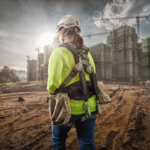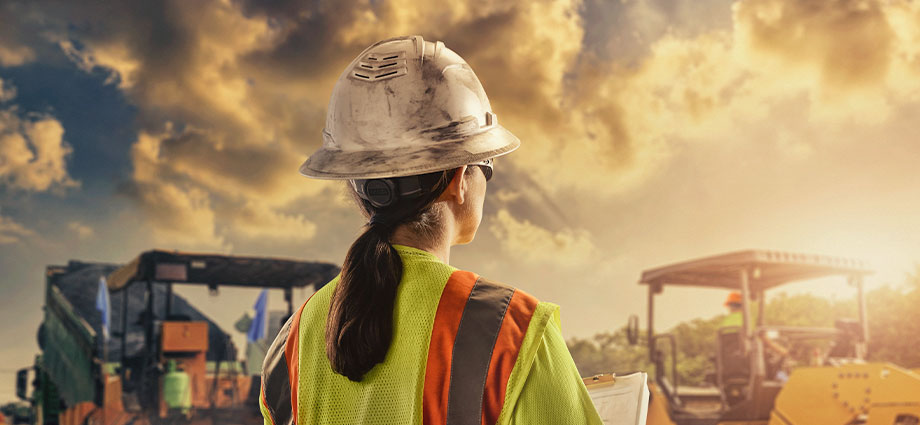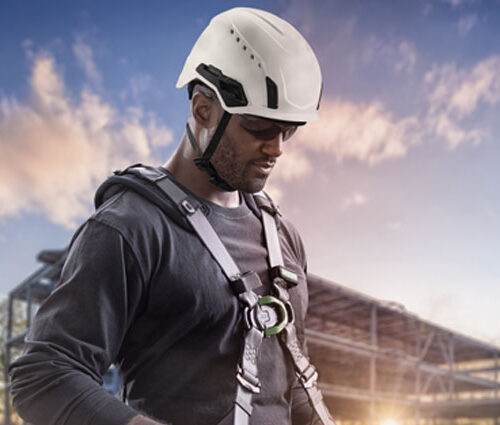
According to the Occupational Safety and Health Administration (OSHA)1, an aerial lift is any vehicle-mounted device used to elevate personnel, including:
- Extendable boom platforms
- Aerial ladders
- Articulating (jointed) boom platforms
- Vertical towers
- Any combination of the above
Due to their mobility and flexibility, aerial lifts have replaced ladders and scaffolding on many jobsites. Aerial lifts may be powered or manually operated, and they are still considered to be aerial lifts whether or not they can rotate around a primary vertical axis.
A scissor lift operates much like an aerial lift—it is motorized and contains a basket from which workers can perform their jobs. However, the platform only goes up and down and cannot be articulated from side to side on a turntable. Per OSHA, this difference is significant enough that a scissor lift is not considered an aerial lift but, instead, a form of scaffolding. Since a scissor lift platform is completely guard railed without gaps, OSHA generally allows work inside the basket without the added protection of a Personal Fall Arrest System (PFAS).
Despite this, many employers treat scissor lifts like aerial lifts, requiring a PFAS to be worn. Accordingly, a number of manufacturers now build scissor lifts fitted with connection points. It should be noted that in cases where manufacturers recommend connection, OSHA often will hold the user responsible for following this recommendation. Therefore, in older lifts without a connection, retrofit kits can be installed if a company requires a PFAS.
OSHA Standards for Aerial Lifts
According to OSHA, many workers are injured on aerial lifts each year, from hazards such as falls from an elevated level, tip-overs, ejections from the lift platform, and entanglement hazards.1
OSHA standards that apply to aerial lifts include 29 CFR 1910.67, 29C FR 1910.269(p), 29 CFR 1926.21, 29 CFR 1926.453, and 29 CFR 1926.502.
Both the OSHA General Industry and Construction regulations specifically require fall protection when working in aerial lifts.
- General Industry 1910.67(c)(2)(v): “A personal fall arrest or travel restraint system that meets the requirements in subpart I of this part shall be worn and attached to the boom or basket when working from an aerial lift.”2
- Construction 1926.502(d): “A body belt shall be worn and a lanyard attached to the boom or basket when working from an aerial lift.”3
OSHA rules and current industry best practice in fall protection for aerial lift devices call for the operator of the lift to ensure that access gates or openings are close and stand firmly on the floor of the bucket or lift platform.1 Additional protection is provided by the use of a personal restraint and/or fall arrest system.

What you don’t know about working at height and fall protection PPE could impact your safety.
TEST YOUR FALL PROTECTION I.Q.Fall Protection PPE for Aerial Lifts
There are several options for fall protection for workers in aerial lifts, including:
Fall restraint should be considered first. Restraint means that workers tie themselves to the basket with a short leash. This option can help prevent a worker from being ejected from the elevated work platform, which is especially important when repositioning the lift.4
MSA V-SERIES® Restraint Lanyards are available in lengths ranging from 3 to 10 feet as well as both fixed length and adjustable options.
Using an energy-absorbing lanyard, in addition to catching the worker, helps reduce the forces on the worker by providing an attached deceleration device which will deploy should the worker go over the edge.
MSA V-SERIES® Energy- Absorbing Lanyards are a lightweight fall protection solution that not only help limit force on the body in a fall, but also on the anchor location. The shock absorbing pouch includes a clear, durable protective cover on the labels to allow for easy inspection.
If restraint is not an option, the general recommendation for a connecting device in an aerial lift is a small retractable device, such as a leading edge personal fall limiter (PFL). According to OSHA, “leading edge means the unprotected side and edge of a floor, roof, or formwork for a floor or other walking/working surface (such as deck) which changes location as additional floor, roof, decking or formwork sections are placed, formed or constructed.”5 Small PFLs work so fast that if the basket of an aerial lift bounces, the rapid pull of line from the unit will often cause the PFL to lock off in a matter of inches, often before the worker even leaves the basket. However, if the worker does go over the rail in a fall, this type of connector helps keep the energy absorber on the worker’s back so that it can properly activate.
MSA V-SHOCK® Leading Edge PFLs help make product selection easier with green housing signifying approval for leading edge use. MSA V-SHOCK Leading Edge PFLs are approved for use in aerial lifts provided all of the potential hazards are considered. In addition, a Competent Person should perform an evaluation to help identify other fall related hazards unique to the application. V-TEC® EDGE PFLs, which feature an optimized design and lightweight materials, are also an option.
Download this white paper to learn more about fall protection for aerial lifts.
Sources:
1) https://www.osha.gov/sites/default/files/publications/aerial-lifts-factsheet.pdf
2) https://www.osha.gov/laws-regs/regulations/standardnumber/1910/1910.67
3) https://www.osha.gov/laws-regs/regulations/standardnumber/1926/1926.502
4) It is also worthwhile to check the aerial lift’s instructions and manufacturer recommendations. For example, most aerial lift manufacturers advise against using lifts for access to a work location that requires a worker to exit the lift—the transition into and out of an aerial lift platform can be especially hazardous. Lift manufacturers also caution strongly against the practice of stepping onto the guard rails when working on an elevated work platform.
5) https://www.osha.gov/laws-regs/regulations/standardnumber/1926/1926.751






